Beast Academy Math
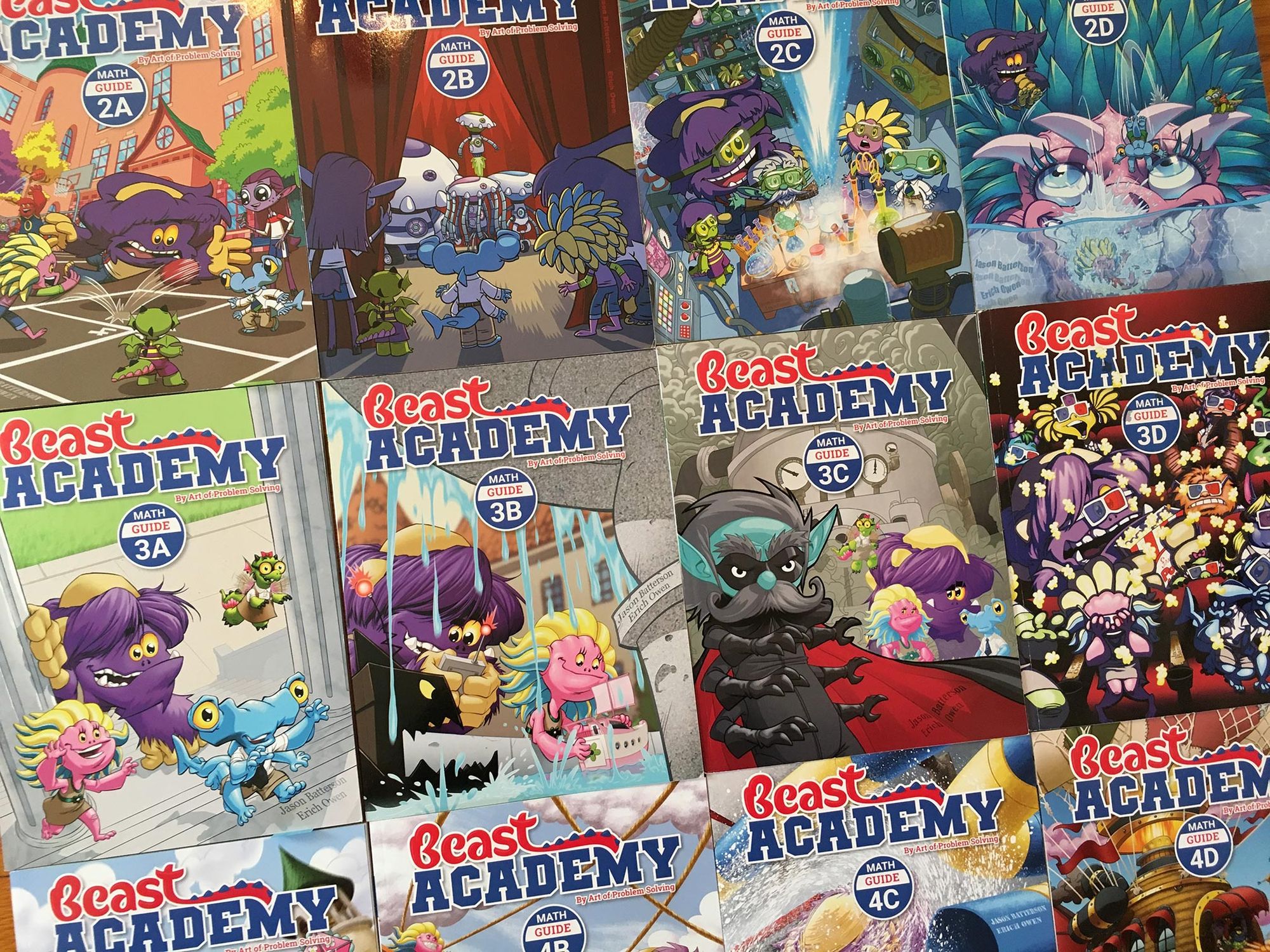
Our math curriculum, Beast Academy, is an unusual one: it's comic books. It’s a strong curriculum, but not likely a great fit for many kids, so I can’t give it a blanket “use this!” recommendation. (For a more general math curriculum recommendation, take a look at Right Start and Math Mammoth. I don’t know anything about them, but they both get recommended over and over again, so it’s where I’d look first.)
Don’t let the cheery artwork and comic book style fool you: this curriculum is wonderful, but also reduces some learners to tears, because it’s hard. It was designed with a specific audience in mind: kids who grasp math concepts readily, get bored out of their gourd having to do a bajillion simple practice problems for a concept they’ve already figured out, and generally skate by easily… until they don’t.
Kids need practice at struggling with problems. The skills for handling a problem that stretches the edges of your capability are something separate from technical math skills, and developing those problem solving strategies is valuable for far more than just math.
A common pattern seen in kids who skate through math easily is that they eventually hit a wall, and that can send them into a tailspin. Beast Academy sets those kids up to struggle, on purpose. It’s extra hard, so they can develop the strategies for handling an answer not coming easily. That’s why the bright colors, silly characters, and comic book format are necessary: to keep them afloat, engaged, and invested through the challenge. I've said before that Beast Academy is as much our growth mindset curriculum as it is our math curriculum.
Beast Academy has fewer math problems, and the problems dive into greater complexity quickly, often by adding a layer of clever puzzle solving. Many kids need more time to practice and develop a deep understanding of the new math concepts before using them in more complex problems, and that’s why Beast Academy may not be a fit. (But there are other perfectly wonderful math programs that would be a great fit, or Beast Academy can wait until they're a little older.)
One of the things I’ve really appreciated about Beast Academy—and the new approaches to teaching math that have been broadly adopted in recent years—is the explicit teaching of the little mental tricks that folks who are numerically fluent do in their heads to play with numbers. Like most modern math curricula, Beast Academy spends a lot of time looking at how to do something from several different conceptual angles, only teaching a “here’s how to do the thing” traditional algorithm once that foundation is laid. That can be confusing and frustrating for folks who aren’t familiar with this approach, who wonder why there’s all the beating around the bush before teaching the algorithm... but I implore you to trust the process. Deeply exploring the concepts under the math is so much better for building strong number fluency than just jumping straight to a recipe for an answer.
Beast Academy starts at level 2, which roughly correlates to 2nd-3rd grade, and goes up to level 5. It generally aligns with the Common Core math standards used in many traditional schools, but not entirely; there’s more information about standards alignment on the Beast Academy website. If you’re starting an older kid on the program, it’s probably worth having them start at or near the beginning, to let them warm up to the challenge of the program, rather than dropping them in the middle. Each level has four sets of guide and practice books: A, B, C, D. In each set, the guide teaches concepts in the format of a full-color comic book, and the practice book is a black-and-white consumable workbook of problems. (There’s also a very popular online version of the program, but we don’t use it so I can’t tell you anything about it.)
Here are some pictures of part of today’s math lesson, from 4B: two pictures from the guide, a few of the problems she did, and a look at how the answer key explains the problems:
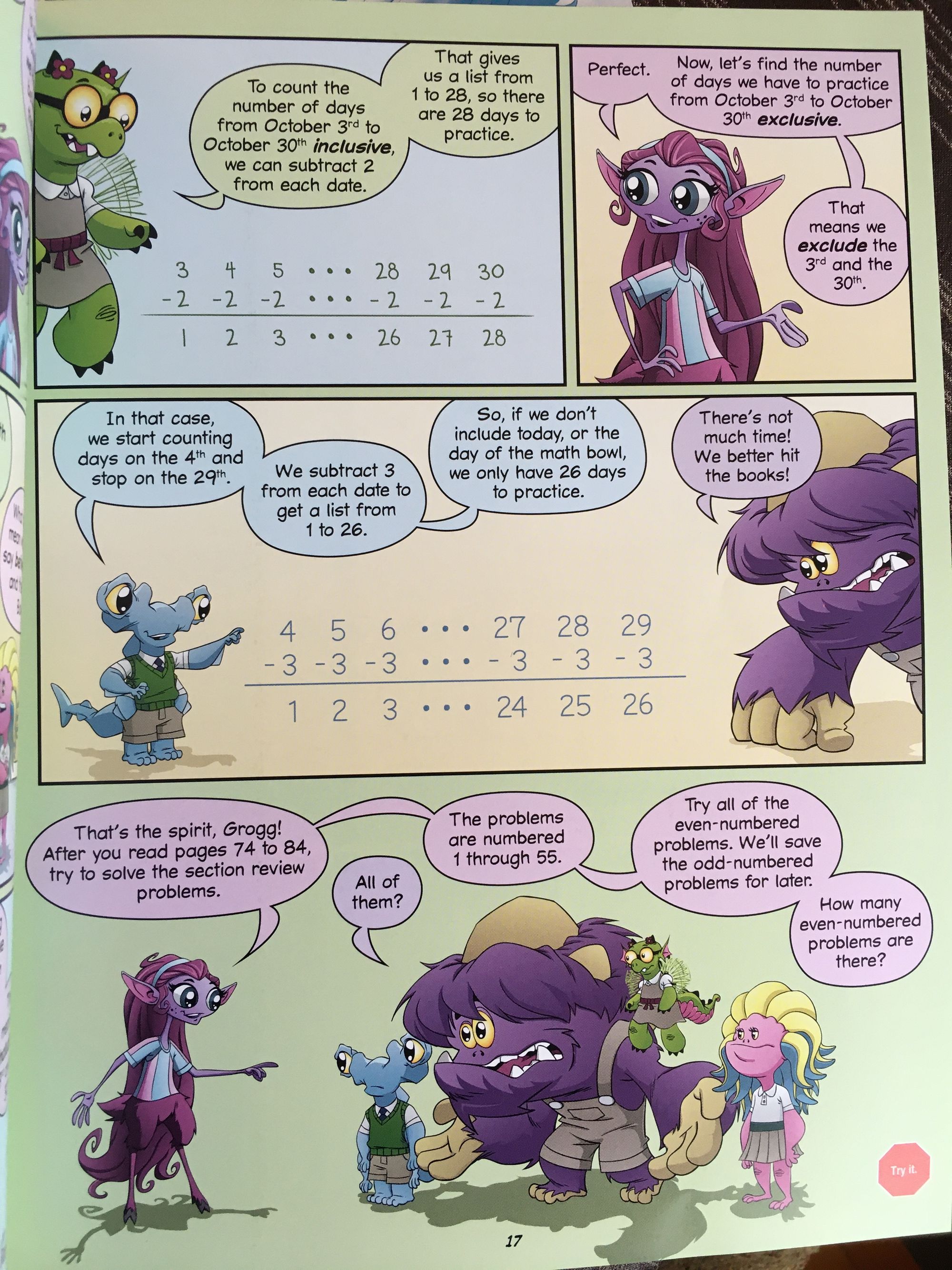
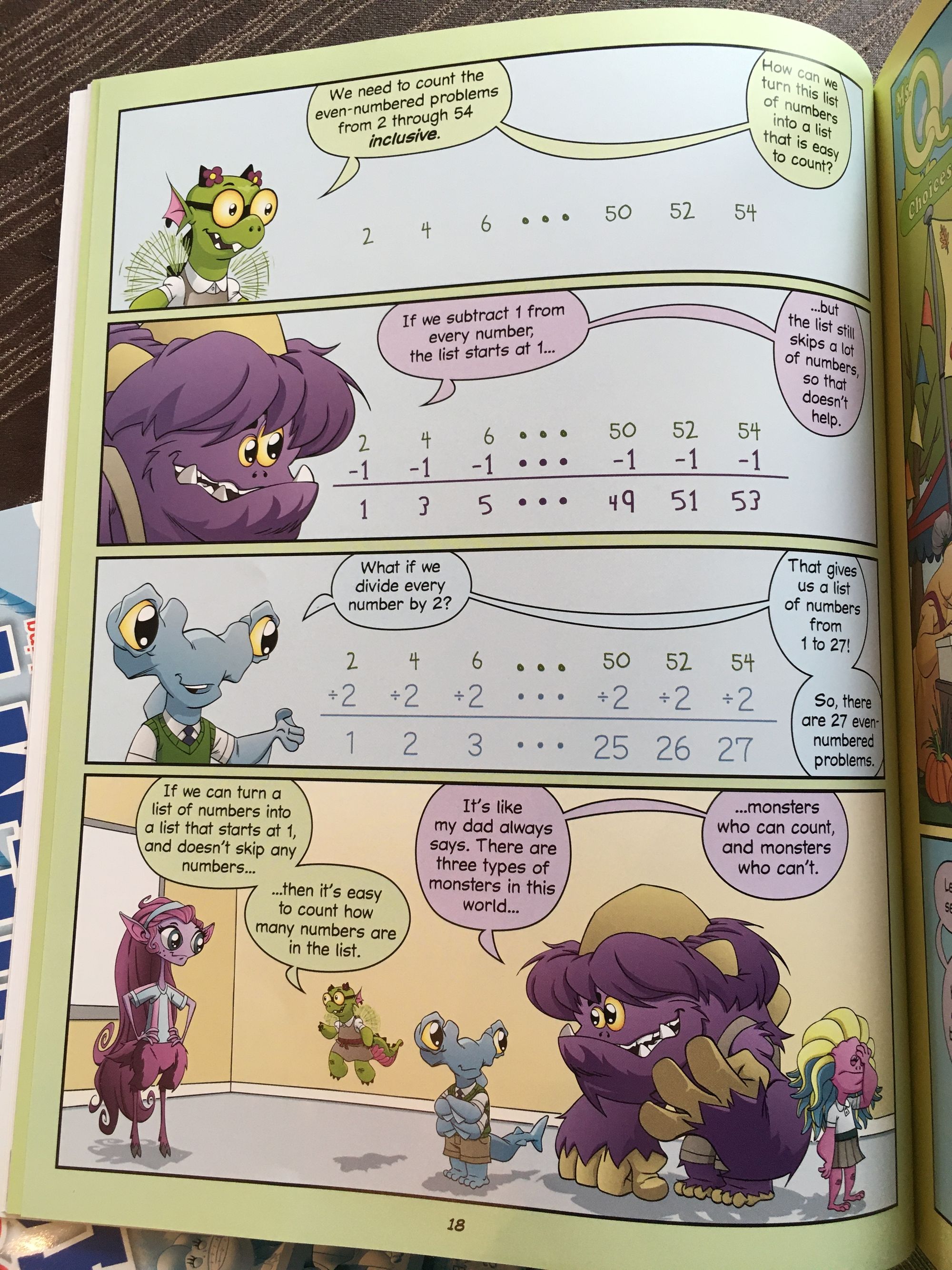

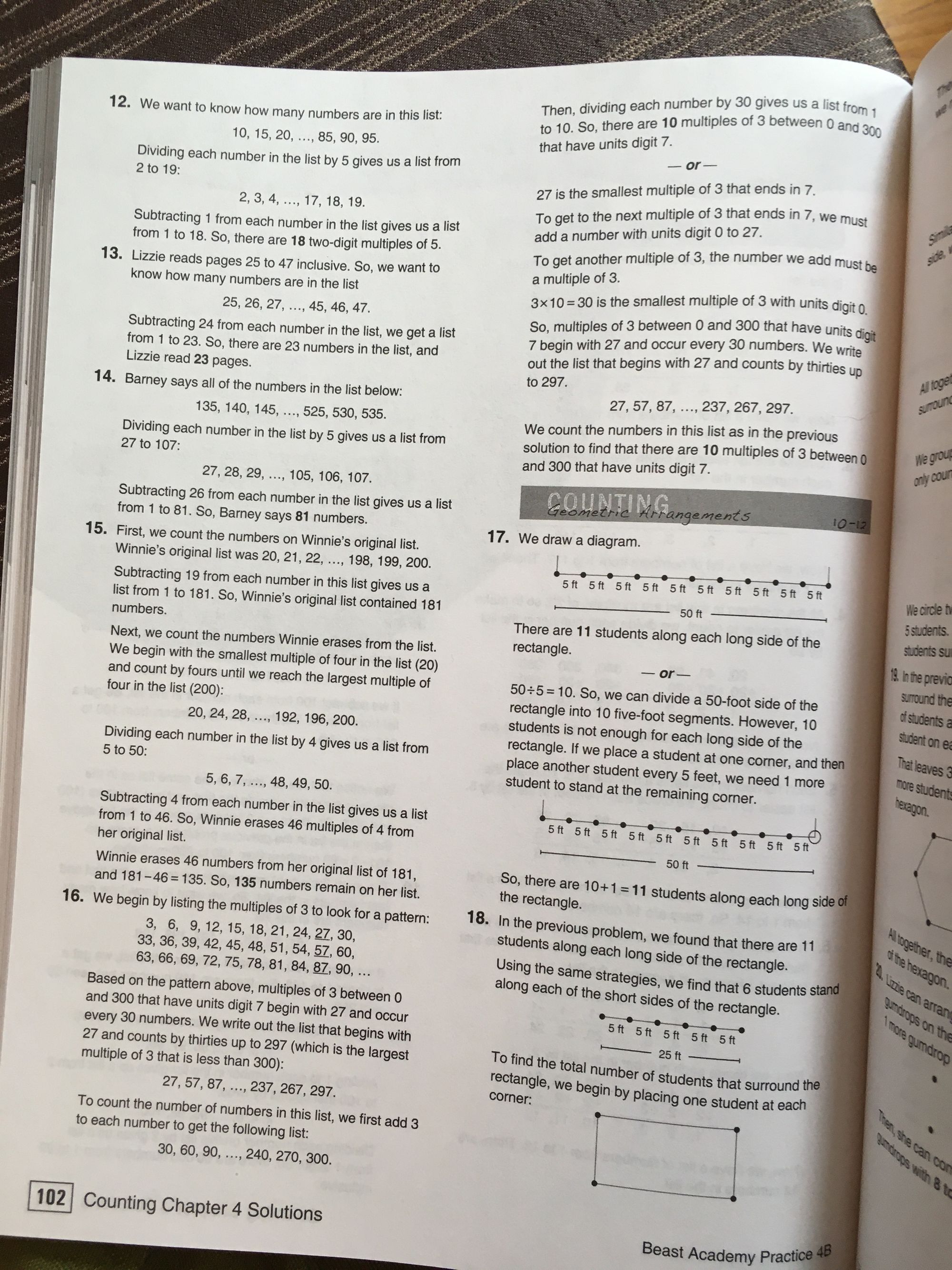
I’ve never been left wanting more from the answer guide; it’s beautifully thorough in explaining the mental steps to finding an answer, often showing more than one route someone might take.
The problems marked with one or two black stars are particularly tricky, and the answer key provides hints for those problems. Wanda always tries to do them herself, without the hint, and usually is successful. If she gets stuck on a black star problem, she, Tom the Dog, and I go into rubber duck/collaboration mode to figure it out, and she gets a chance to practice explaining her thinking.
The pictures from today's lesson are on the dry side; the guide is full of fun, silly stuff, including some pop culture references that will definitely go over kids' heads. My favorite was a drill sergeant character that showed up when it was time for kids to learn the times table, and the whole thing turned into a big Full Metal Jacket reference:
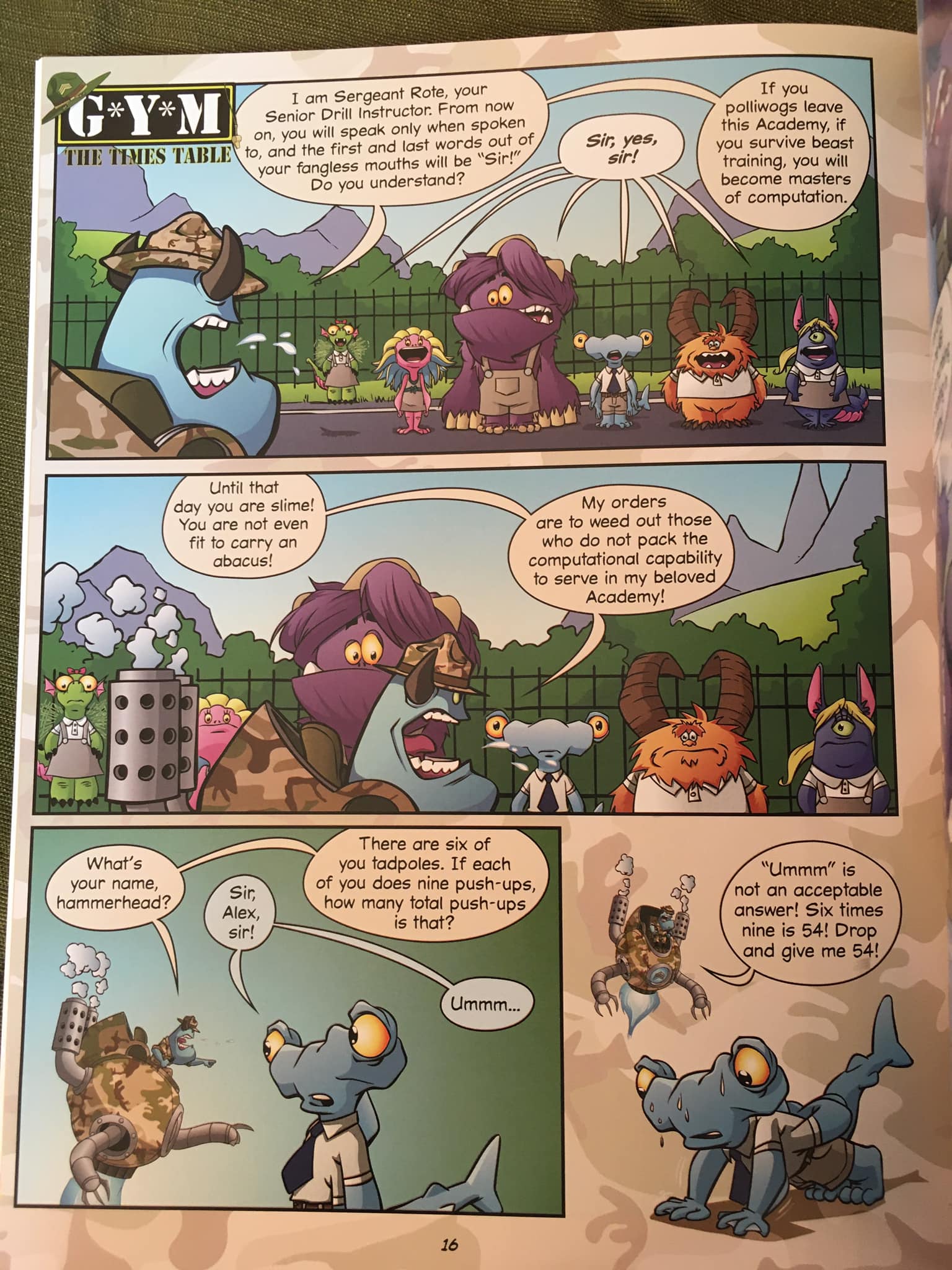
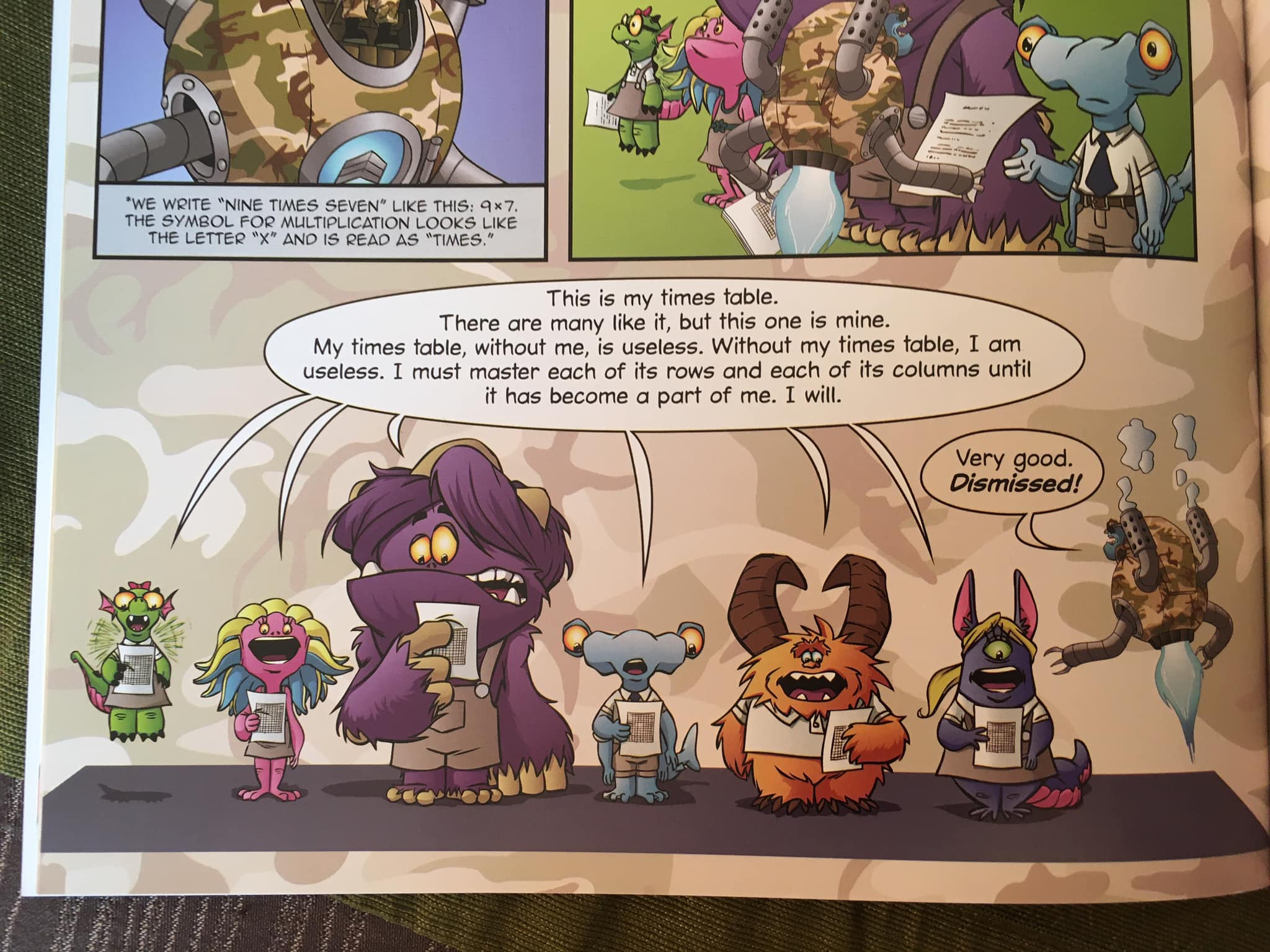
And sometimes it turns into an unexpected history lesson:
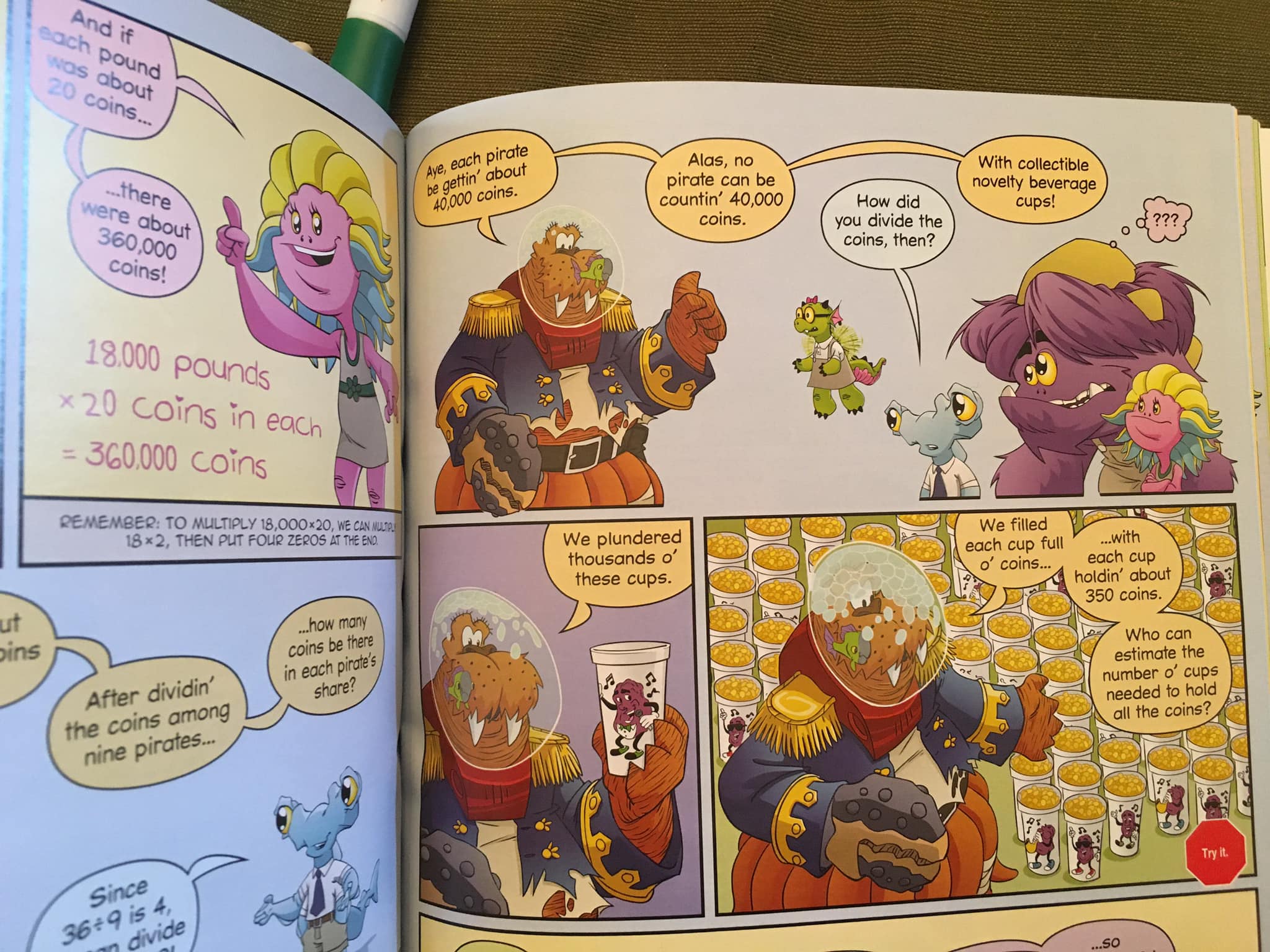
Wanda's currently on level 4B of Beast Academy, and she keeps pulling out the guides from the earlier levels to read for fun, or as a reference when she recalls a concept that could help her (for instance, yesterday we were doing some science that included some unusually large numbers, and she remembered that in the 2D guide there was a page showing the names for some of the unusually large place values; it turned out the number we were looking at was in the quintillions).
I love Beast Academy, it's one of the first things I fell in love with about homeschooling. Wanda hasn't just learned solid math skills, she's learned problem solving skills, flexible thinking, collaboration, and she's learned a lot about how she works best.
I also kinda want the Beast Academy folks to start marketing it to adults who are down on their own math capability to try this program for themselves; it's awfully fun, and everyone deserves to know they're capable of great, mathy things.

